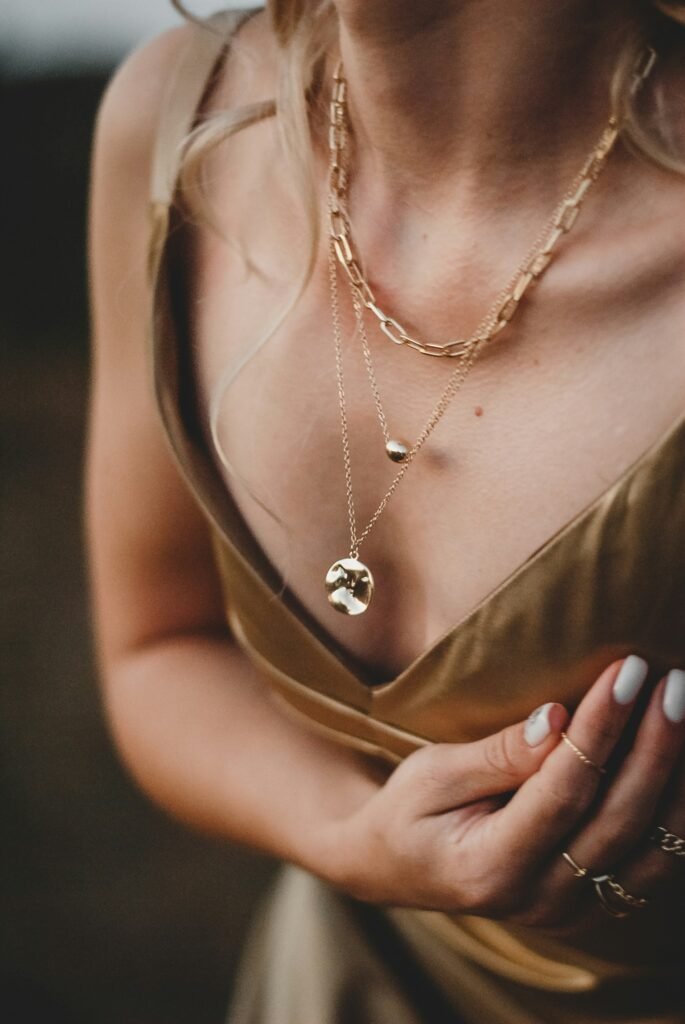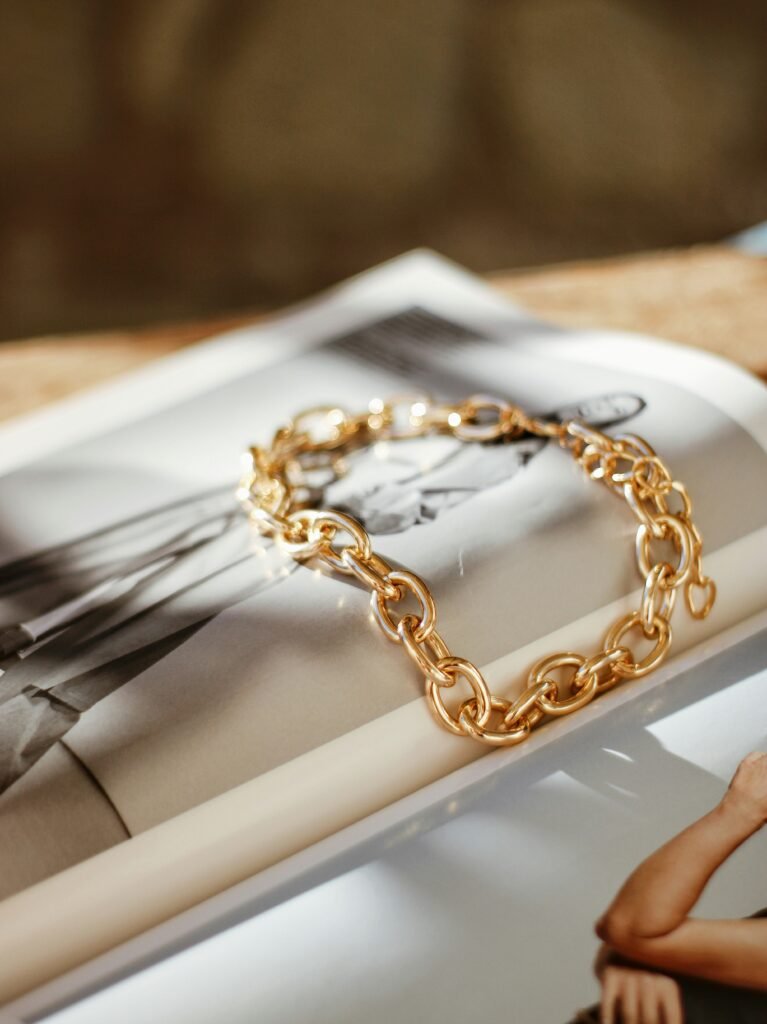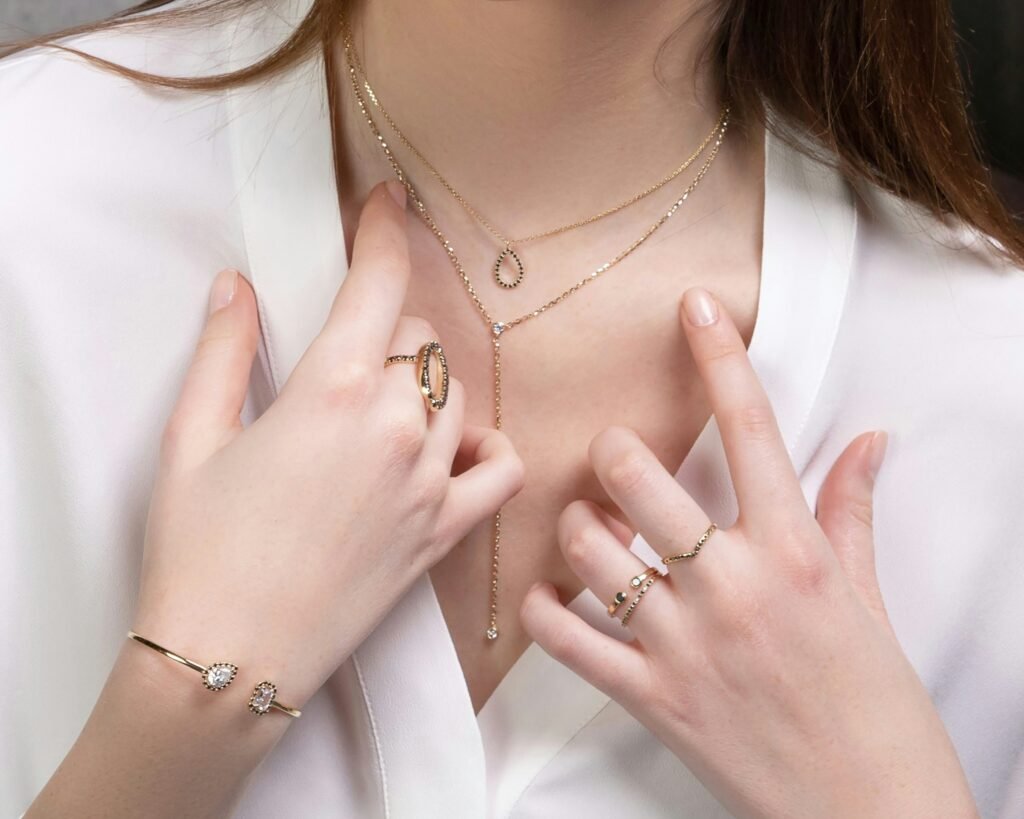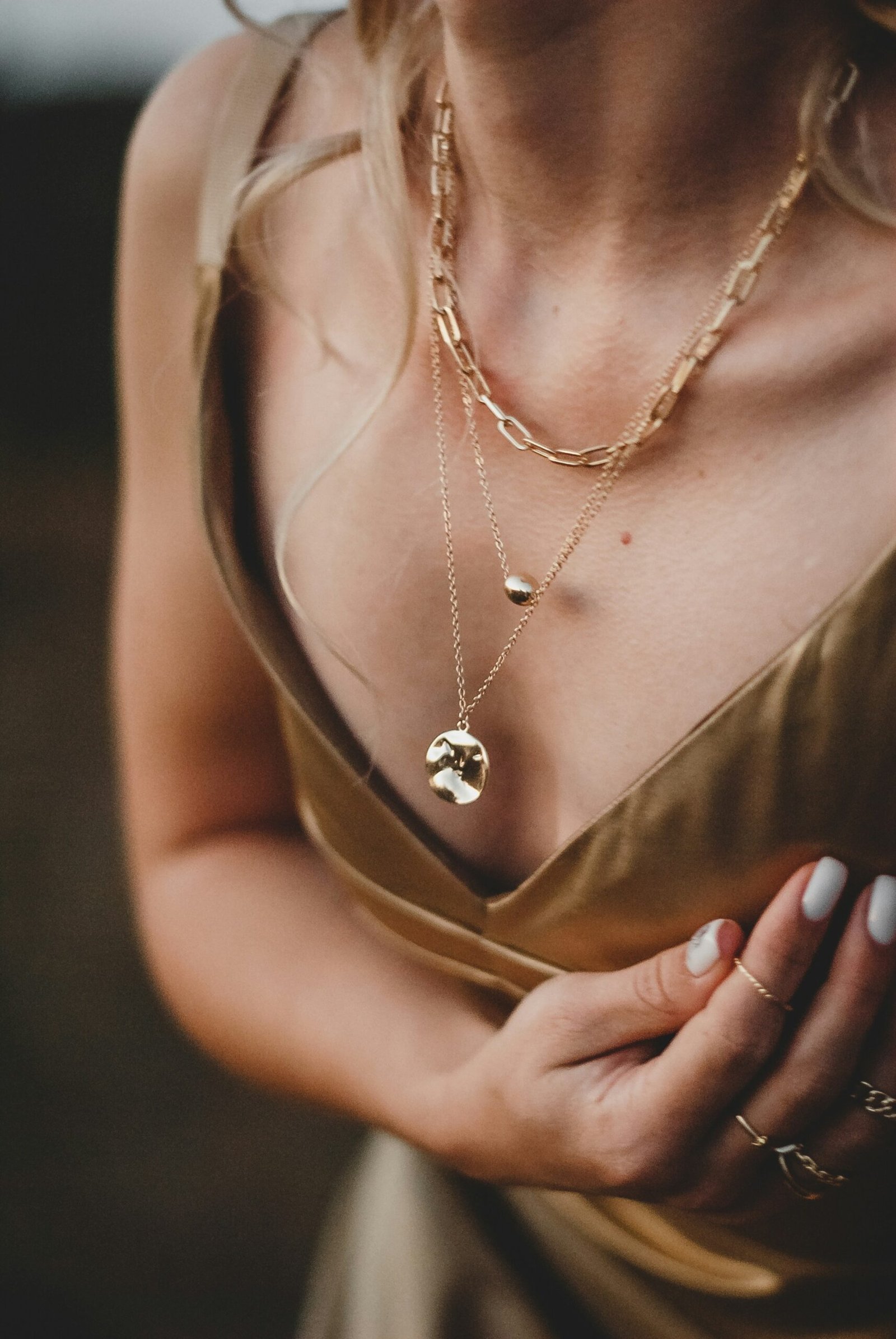Are you tired of struggling to find the perfect fit for your string bracelet? Look no further, because in this article we will guide you through the considerations for choosing the right size. Whether you prefer a snug fit or a looser style, we have got you covered. So sit back, relax, and let us help you find the perfect size for your string bracelet.

This image is property of images.unsplash.com.
Measuring Your Wrist
When it comes to finding the perfect fit for your string bracelet, the first step is to measure your wrist. There are several methods you can use to accurately measure the circumference of your wrist.
Using a measuring tape
Using a flexible measuring tape is one of the most straightforward ways to measure your wrist. Start by wrapping the tape around the widest part of your wrist, just above the wrist bone. Make sure the tape is snug but not too tight. Take note of the measurement in inches or centimeters.
Using a piece of string
If you don’t have a measuring tape on hand, a piece of string or yarn can be a handy alternative. Wrap the string around your wrist in the same way as you would with a measuring tape, and then mark where the string overlaps with a pen or a small piece of tape. After removing the string, lay it flat on a ruler or a measuring tape to get an accurate measurement.
Marking the measurement
Once you have your wrist measurement, it’s essential to mark it clearly. This will help you determine the appropriate bracelet size later on. If you’re using a measuring tape, note the measurement down immediately. If you’re using a string or yarn, make sure to mark the spot where it overlaps before removing it from your wrist.
Calculating the size
After measuring your wrist, you’ll need to calculate the size of the string bracelet that will provide the right fit. To determine the bracelet size, you can add different amounts to your wrist measurement, depending on the desired fit.
Determining Bracelet Length
Choosing the length of your string bracelet is crucial to ensure a comfortable and stylish fit. Consider your personal preferences, the snugness or looseness you desire, and any additional elements you plan to incorporate into your bracelet, such as charms or beads.
Snug fit
If you prefer a snug fit, you’ll want your bracelet to be closer to your wrist without much movement. To achieve this, add approximately 0.25 inches (0.6 cm) to your wrist measurement.
Loose fit
On the other hand, if you prefer a looser fit for your bracelet, you can add around 0.5 to 0.75 inches (1.27 to 1.9 cm) to your wrist measurement. This extra length will allow your bracelet to move more freely and provide a relaxed feel.
Preferred style
Consider your preferred style when determining the length of your string bracelet. If you like a more minimalist look, you may opt for a shorter length. Alternatively, if you prefer a statement piece, a longer bracelet might be more suitable.
Considerations for charms or beads
If you plan to add charms or beads to your string bracelet, it’s essential to account for their size and how they might affect the overall length. Take into consideration the space the charms or beads will occupy when calculating the desired length for your bracelet.

This image is property of images.unsplash.com.
Common Bracelet Sizes
While there is no one-size-fits-all approach to string bracelet sizing, there are some common size ranges that can serve as a helpful guide when finding the right fit.
Small (6-6.5 inches)
A small bracelet size typically fits wrists with a circumference ranging from 6 to 6.5 inches (15.24 to 16.51 cm). This size is often suitable for individuals with petite wrists or those who prefer a more dainty and delicate look.
Medium (6.5-7 inches)
The medium bracelet size is designed to fit wrists with a circumference of 6.5 to 7 inches (16.51 to 17.78 cm). This size is considered the average and tends to accommodate most individuals comfortably.
Large (7-7.5 inches)
For individuals with larger wrists, a large bracelet size ranging from 7 to 7.5 inches (17.78 to 19.05 cm) is typically the best choice. This size ensures a comfortable fit without feeling too tight or restrictive.
Extra Large (7.5-8 inches)
If you have an extra large wrist circumference, typically measuring between 7.5 to 8 inches (19.05 to 20.32 cm), an extra large bracelet size is recommended. This size ensures a comfortable and stylish fit for those with more substantial wrists.
Adjustable Bracelets
When it comes to versatility and convenience, adjustable bracelets are an excellent choice. These bracelets offer the flexibility to customize the size to fit your wrist comfortably.
Advantages of adjustable bracelets
One of the advantages of adjustable bracelets is that they eliminate the need to worry about specific measurements. They can easily be adjusted to accommodate a range of wrist sizes, making them ideal for individuals who may prefer to wear their bracelets at different lengths or for those looking to give a bracelet as a gift.
How to adjust the size
Adjustable bracelets typically feature an extension chain or additional loops that allow for resizing. To adjust the size, simply slide the clasp or closure along the chain or loop until the desired fit is achieved. This adaptability ensures a comfortable and customized experience for the wearer.
Limitations of adjustability
While adjustable bracelets offer flexibility, it’s important to note that they may not be suitable for all styles. Some intricate designs or bracelets with specific closures, such as sliding knots or button closures, may not be easily adjustable. Be sure to consider the design and closure type when opting for an adjustable bracelet.

This image is property of images.unsplash.com.
Choosing String Material
When selecting a string bracelet, one crucial element to consider is the material of the string itself. Different materials offer varying levels of durability, comfort, and overall aesthetic appeal.
Cotton
Cotton is a popular choice for string bracelets due to its softness and breathability. It is comfortable to wear and tends to be hypoallergenic, making it suitable for those with sensitive skin. However, cotton strings may not be as durable as certain synthetic materials and may require more care and maintenance.
Nylon
Nylon is a durable and versatile string material often used in string bracelets. It is known for its strength, stretchability, and resistance to wear and tear. Nylon strings are available in various colors and can withstand everyday activities, making them a practical choice for active individuals.
Polyester
Polyester strings are another durable option for string bracelets. They are resistant to fading, stretching, and shrinking, making them ideal for long-lasting wear. Polyester also offers a wide range of color options, allowing for customization and creative bracelet designs.
Hemp
Hemp strings are known for their natural and rustic appearance. They are eco-friendly and biodegradable, making them an excellent choice for those seeking sustainable options. Hemp strings offer a unique texture and are often selected for their earthy vibe.
Leather
Leather bracelets provide a timeless and sophisticated look. They are durable and can withstand daily wear, developing a unique patina over time. Leather strings come in different colors and finishes, allowing for a range of stylish and customizable options.
Elastic
Elastic strings are a convenient and easy-to-wear option for string bracelets. They provide a comfortable fit and are stretchable, making them suitable for various wrist sizes. Elastic strings are commonly used in beaded bracelets or bracelets with sliding knots, ensuring a secure and adjustable fit.
Considerations for Clasps and Closures
The clasp or closure of your string bracelet plays a vital role in both functionality and style. Different closures offer varying levels of security and ease of use, allowing you to choose the one that best suits your needs.
Spring ring clasp
The spring ring clasp is a classic and commonly used closure for bracelets. It features a small, spring-loaded mechanism that opens and closes by pushing a small lever. Spring ring clasps provide a secure closure while maintaining a sleek and minimalistic aesthetic.
Lobster clasp
Similar to the spring ring clasp, the lobster clasp is a popular choice for securing bracelets. It has a small, spring-loaded mechanism with a wider opening, making it easier to manipulate when fastening. Lobster clasps offer a secure closure and are ideal for those who value ease of use.
Toggle clasp
Toggle clasps consist of a T-shaped bar that fits into a circular or oval-shaped component. This type of closure offers a distinctive and decorative element to your bracelet. Toggle clasps can be easily manipulated and provide secure and stylish fastening.
Magnetic clasp
Magnetic clasps use magnets to secure the bracelet, providing a seamless and effortless closure. They are easy to operate and ensure a secure hold. However, it’s important to note that magnetic clasps may not be suitable for individuals with pacemakers or certain medical conditions.
Sliding knot
Sliding knots are commonly used in adjustable string bracelets. They consist of two knots that can be slid along the string to adjust the size and secure the bracelet in place. Sliding knots offer a versatile and customizable closure option, allowing for easy resizing and a comfortable fit.
Button closure
Button closures are often seen in wrap bracelets or bracelets with multiple strands. They involve threading the string through a buttonhole and securing it with a button. Button closures add a touch of elegance and can be adjusted to create a more personalized fit.
Personal Preferences and Style
Choosing the perfect string bracelet goes beyond size and closure options. Your personal preferences and style play a significant role in finding a bracelet that reflects your individuality.
Color choices
Consider the color palette that resonates with you. Vibrant and bold colors can make a statement, while neutral or earthy tones offer a more subtle and versatile look. Think about how the bracelet will complement your wardrobe and personal style.
Pattern options
Patterns can add visual interest and uniqueness to your bracelet. Whether you prefer simple stripes, intricate macramé designs, or geometric shapes, there are endless pattern options to choose from. Select a pattern that speaks to your personality and adds a touch of flair to your wrist.
Layering multiple bracelets
If you enjoy a stacked and layered look, consider choosing string bracelets that can be paired and mixed with other bracelets. Experiment with different colors, materials, and shapes to create a curated wrist stack that showcases your individual style.
Minimalist or statement piece
Decide whether you prefer a more minimalistic and understated bracelet or a statement piece that grabs attention. String bracelets can be delicate and dainty, or they can feature bold beads, charms, or pendants that make a statement. Consider the occasions and outfits you plan to wear the bracelet with to determine the level of boldness you desire.
Tips for Trying On Bracelets
When trying on your string bracelet, there are a few things to keep in mind to ensure a comfortable and visually appealing fit.
Wrist measurement
Before trying on the bracelet, double-check the wrist measurement you took earlier. Compare it with the bracelet’s size to ensure it falls within the desired snugness or looseness you prefer.
Comfort and movement
When trying on the bracelet, pay attention to how it feels on your wrist. It should be comfortable without squeezing or pinching your skin. Also, take note of how it moves on your wrist. Some individuals prefer a looser fit for ease of movement, while others may prefer a closer fit.
Visual appeal
Consider how the bracelet looks on your wrist. Does it align with your personal style and complement your outfit choices? Look for any visual elements like color, pattern, or design that stand out to you and make you happy.
Considerations for Different String Bracelet Styles
String bracelets come in various styles, each offering its unique charm and appeal. Here are some considerations for popular string bracelet styles:
Friendship bracelets
Friendship bracelets are traditionally made with colorful threads woven or knotted into intricate patterns. When selecting a friendship bracelet, consider the size of the pattern, the color combination, and the level of intricacy you prefer.
Beaded bracelets
Beaded bracelets feature a combination of string or cord and beads. When choosing a beaded bracelet, consider the size, color, and arrangement of the beads. Decide whether you prefer a symmetrical pattern or a more random and eclectic look.
Charm bracelets
Charm bracelets allow you to personalize your wrist adornment with meaningful charms or pendants. Consider the size and weight of the charms, as well as their attachment method, when selecting a charm bracelet.
Wrap bracelets
Wrap bracelets consist of several loops of string or cord that wrap around the wrist multiple times. Consider the thickness and material of the string, as well as the color and pattern of the wraps, when choosing a wrap bracelet.
Bolo bracelets
Bolo bracelets feature a sliding closure that allows for easy adjustment of the bracelet’s size. Consider the material and design of the bolo closure, as well as the overall aesthetic and desired fit.
Anklets
If you’re looking for a string bracelet to adorn your ankle, consider the length, closure type, and materials when selecting an anklet. Ensure the anklet provides a secure fit without being too tight or uncomfortable.
Seeking Professional Assistance
If you’re unsure about determining your bracelet size or have specific requirements or preferences for your string bracelet, seeking professional assistance can be beneficial.
Visiting a jewelry store
Jewelry stores often have knowledgeable staff who can guide you in choosing the right size and style for your string bracelet. They can measure your wrist accurately and provide expert advice on the best options available.
Consulting a jewelry designer
If you have a particular vision or desire a custom-made string bracelet, consulting a jewelry designer can help bring your ideas to life. They can work closely with you to create a bracelet that fits perfectly and reflects your unique style.
Getting custom-made bracelets
Custom-made bracelets offer the ultimate level of personalization and customization. Working with a jeweler or bracelet designer, you can create a bracelet tailored specifically to your preferences, including size, materials, closures, and overall design.
In conclusion, finding the right fit for your string bracelet involves several factors. Measuring your wrist accurately, considering the desired fit and style, and selecting the appropriate string material and closure type are all crucial steps. With the wealth of options available, you can find a string bracelet that not only fits perfectly but also showcases your personal style and individuality.
